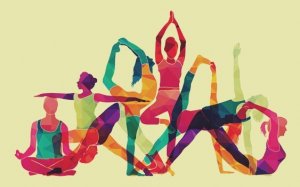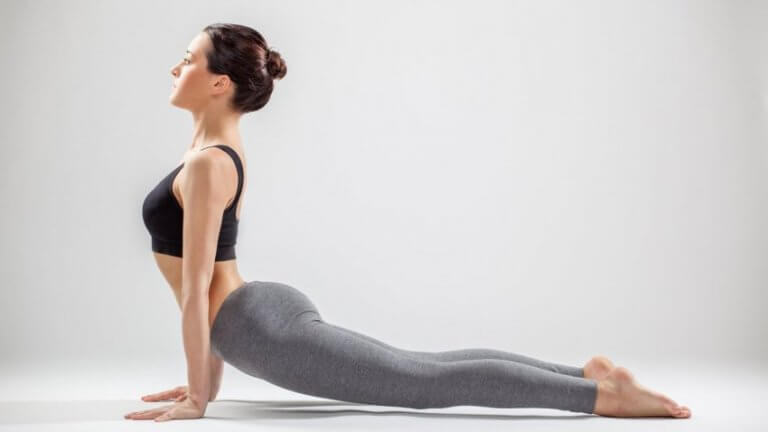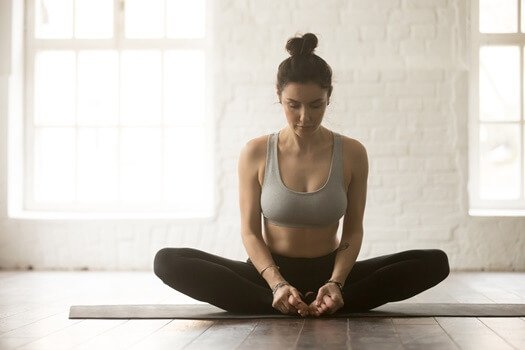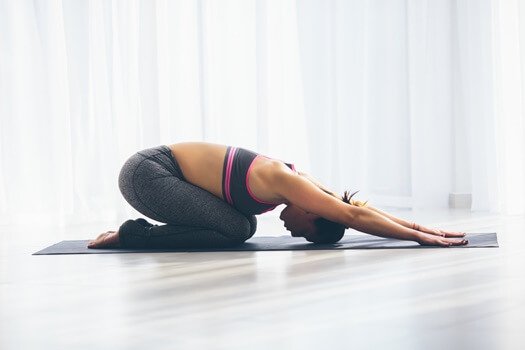Yoga for Beginners: The Art of Harmonizing Body and Mind


Written and verified by the psychologist Gema Sánchez Cuevas
There’s yoga for beginners for people who’re getting into this physical and mental discipline out of curiosity. It’s also for people looking for an alternative therapy for stress relief, anxiety, or sleep disorders. Whatever your reasons are, there are some poses (asanas) that will help you get a basic start with yoga and discover all its benefits.
It’s common to hear people say that once you start doing yoga every day, you won’t see life the same way anymore. Something changes. That might seem like an exaggeration, especially if you see it as a discipline with some exercises that just involve a few poses.
But yoga is actually much more than that. And that’s because yoga goes beyond the physical plane to reach your mental and emotional planes, meaning it encourages a balance between all the planes of your reality.
The word yoga comes from Sanskrit and means “union.” It’s also associated with meditation practices in Hinduism, Buddhism, and Jainism.
What we have here is a form of exercise that can impact every part of you. It will give you a tougher and more flexible body and a more centered mind. According to some people, it will even give you a more receptive and noble soul.
Exaggeration or not, it’s a practice that’s been recognized by institutions like The American Psychology Association (APA), which has done research showing yoga has benefits, especially for your mental health.
It’s always a good time to try new things, especially if they’re positive and satisfying. It’s worth giving yoga a try and finding out what impact this practice that comes from India and the Sanskrit word for “union” might have on you.

Yoga for beginners: learn to listen to your body and mind
There’s a kind of yoga for beginners and a kind for people who already know what their bodies need and which daily poses are good for their balance and well-being.
We also want to point out one important thing: if you’ve never done this kind of exercise before it’s not a good idea to force your body or start with complicated poses. Otherwise, you’ll run the risk of injuring yourself unnecessarily.
That’s why the best thing is to start out slowly and get a sense of what it’s like and what it does for you. Like we said at the beginning, it’s not just about doing some poses with your body.
Yoga also combines stretches with deep breathing and meditation. If you’re consistent, all that will get you in better shape, make you more flexible and give you more lung capacity, a more balanced heart rate, and less joint pain.
It’s worth trying, but doing it in a balanced way means starting with the poses that are part of what’s known as yoga for beginners.
1. Warrior pose
What you do in yoga are exercises called “asanas” (poses). They’ll help you start an intimate and silent conversation with your own body. This will help you get to know yourself better and accept your physical and mental reality.
And if you look at the huge group of asanas, you can see there are some that are a great kind of preventative medicine and are perfect for getting started with yoga. This pose is one of them. Here’s how to do it.

- Stand up on your mat.
- Separate your legs and have your forward foot at 90º and your back foot at 60º.
- Feel the floor beneath the soles of your feet, because that’s your point of support and also where your strength comes from.
- Now, bend your forward leg until your thigh is parallel to the floor.
- Make sure your knee lines up with your heel.
- Keep your back straight and then raise your arms.
2. Upward facing dog
When it comes to yoga for beginners, you’ll probably notice that upward facing dog and downward facing dog are the most common poses. But if you’ve never done yoga before, you should start with the first pose, which is the easiest one.

- Lie face down on the mat.
- Now bring your hands up to your shoulders with your palms open to lift yourself up bit by bit.
- Stretch your arms at the same time as you arch your back backward.
- Then, raise your hips and knees from the floor. All the effort should be in your arms.
- Try to move your shoulder blades together, without forcing it, which should make your sternum point outward. It’s also not a good idea to put too much strain on your lower back.
3. Butterfly pose
You’ll love this pose. It’s also known as “baddha konasana,” and it’s perfect for beginners. It’s also one of the most important yoga poses. Here are the steps you have to follow:

- Sit on the floor with your back really straight. Now bend your knees and touch the soles of your feet together. You don’t need to force it, it’s just about getting to a place where you feel good without any pain.
- Feel the way your knees fall to each side, slightly tugging on your muscles and groin.
- As you start to feel more comfortable, start to lower your knees a bit more, bringing your weight down to your glutes but always keeping your back straight.
- Now grab the big toe of each of your feet and try to separate them a bit. Feel the way the pressure on your heels builds up.
4. Extended child’s pose
When it comes to yoga for beginners, extended child’s pose (utthita balasana) is definitely one of the most well-known and most relaxing poses. Once you learn this one and practice it, you’ll always want to practice this cathartic and beneficial pose. These are the steps you have to follow:

- Get on your knees on the mat.
- Bring your heels and big toes together.
- Now extend yourself forward, stretching your arms in front of your head.
- Put your wide open palms down on the mat.
- Finally, lay your forehead on the floor and breathe deeply.
As you can see, yoga for beginners isn’t just simple. It’s also relaxing and helps you relieve excessive muscle strain and tension. As long as you do it without pushing yourself too hard, and being aware of your physical limits, you can start to add new, more complicated asanas. That way you can experience more of the benefits of this age-old, amazing practice.
This text is provided for informational purposes only and does not replace consultation with a professional. If in doubt, consult your specialist.








